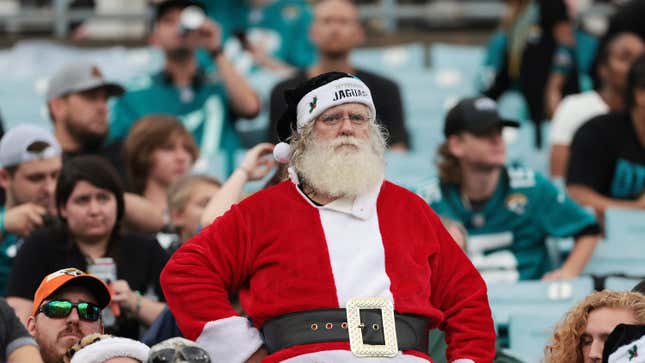
The weather, it’s just like us. As Omicron rages across the U.S. and people are forced to decide whether to travel amidst murky public health guidance, the weather also seems to have thrown its hands in a collective atmospheric “fuck it.”
The eastern two-thirds of the U.S. is sitting under bizarre late December warmth while the West Coast, particularly the Pacific Northwest, gets absolutely pummeled with cold and snow for Christmas. It’s a supremely confusing bout of weather maximalism, one that will ensure even more chaos for travel plans and wipe out the odds of a white Christmas for most people. But we love chaos here, don’t we folks?
Wishing the Eastern U.S. a Very Merry Torchmas
Weather nerds often refer to the pattern setting up for the eastern portion of the U.S. as a “torch” owing to the appearance of a huge red splotch on the forecast map. A staggeringly huge area of the eastern U.S. is about to get blasted with heat (relatively speaking); above-normal temperatures are set to extend from Arizona to New Hampshire for Christmas day.
The Plains and Southeast will be the epicenter of the heat where temperatures will be up to an astounding 30 degrees Fahrenheit (17 degrees Celsius) above normal. Parts of Texas could reach the upper 80s, which would absolutely crush previous record highs. That’s a big plus for outdoor gatherings. (Look, we’re trying here, OK?)
Other areas won’t have absolute temperatures quite that high, but records could still fall. And the warmth also means snowy locations could be dirt brown instead. Chicago can expect the 40s and large parts of the Appalachians will also be above freezing. While these places aren’t guaranteed a white Christmas most years, it’s all but out of the question with this year’s heat. Just a quarter of the U.S. is currently covered in snow and the heat could further cut into that. But where there is snow, there’s about to be a lot more...
Wishing the Western U.S. a Very Merry Snowmas
Weather nerds often refer to the pattern setting up over the western U.S. as “snowpocalypse.” It’s a very technical term, I really don’t have time to fully explain. But suffice to say, the Sierra Nevada and the Cascades are about to see snow. A lot of it.
A series of powerful storms will hit the West Coast starting on Thursday, with heavy snow falling in California, while the Pacific Northwest could see the most potent impacts on Christmas. Unlikely previous storms that came with warm air and rain (and debris flows), these will be accompanied by cold air dropping out of the north. That means snow could fall in the mountains and valleys. Seattle and Portland, cities extremely not known for white Christmases, could see measurable snow. The National Weather Service’s Portland office tweeted, “we are in a pattern that can deliver snow & it can do it more than once” over the coming week. The Seattle office tweeted that there have been nine Christmases with measurable snow on the ground in the city, the last one being in 2017.
In the mountains, snowfall totals could reach 10 feet (3 meters). It may not exactly be the hanging out with family outside weather of the South, but it’s great news if you booked a Tahoe Christmas ski vacation. (Just watch the avalanche danger.)
Southern California will also be blasted with moisture. Los Angeles won’t see a white Christmas (sorry, Angelenos), but flood watches are in place in the surrounding areas given the heavy rain expected. Probably best to just stay inside, tbh.
Why the Weather Is So Divided
While it’s tempting to ascribe the duality of this year’s Christmas weather to political polarization or an atmosphere free of the reins of Big Government, the reality is there are internal reasons for the atmospheric strife.
A natural climate pattern known as La Niña favors this exact winter setup. The cooler-than-normal waters in the eastern tropical Pacific alter weather patterns all around the world. That includes making the jet stream take on a more wavy pattern over the U.S., allowing cold air to plunge from the Arctic into the Northwest and heat to come bubbling up from the tropics to the southern and eastern portions of the country. The intensity of the heat is impossible to talk about without mentioning climate change, though. Burning fossil fuels has locked in a legacy of heat that’s only becoming more clear with each passing season. It was only just a few months ago the Tahoe ski resorts now under winter storm warnings were on fire in a bad way.